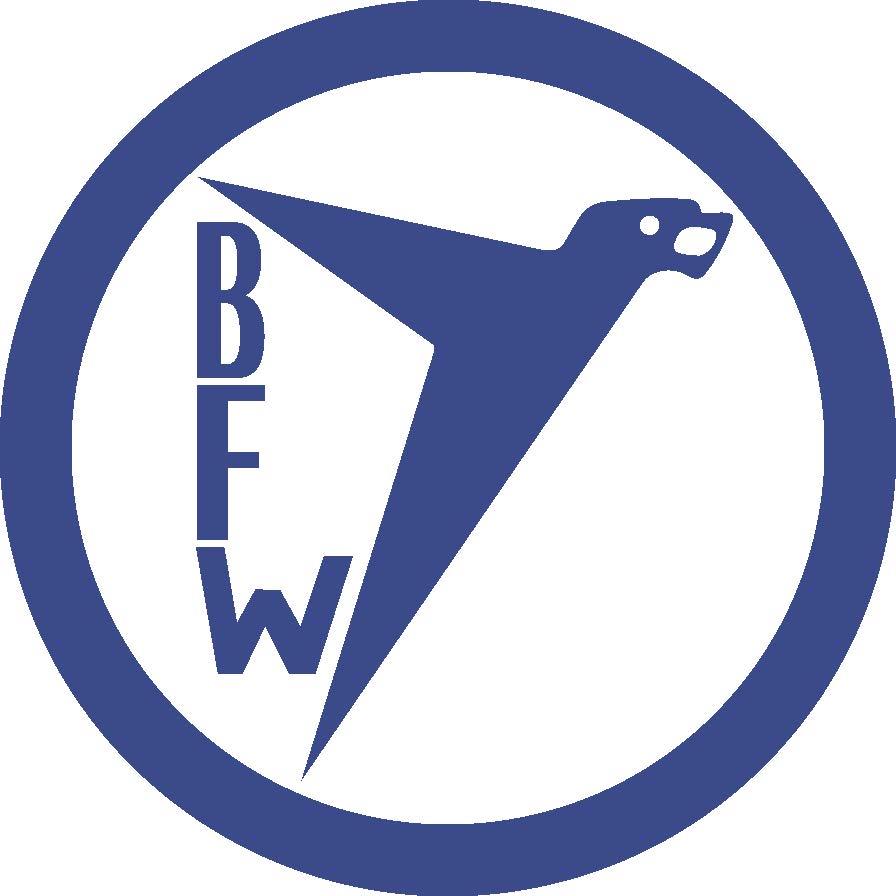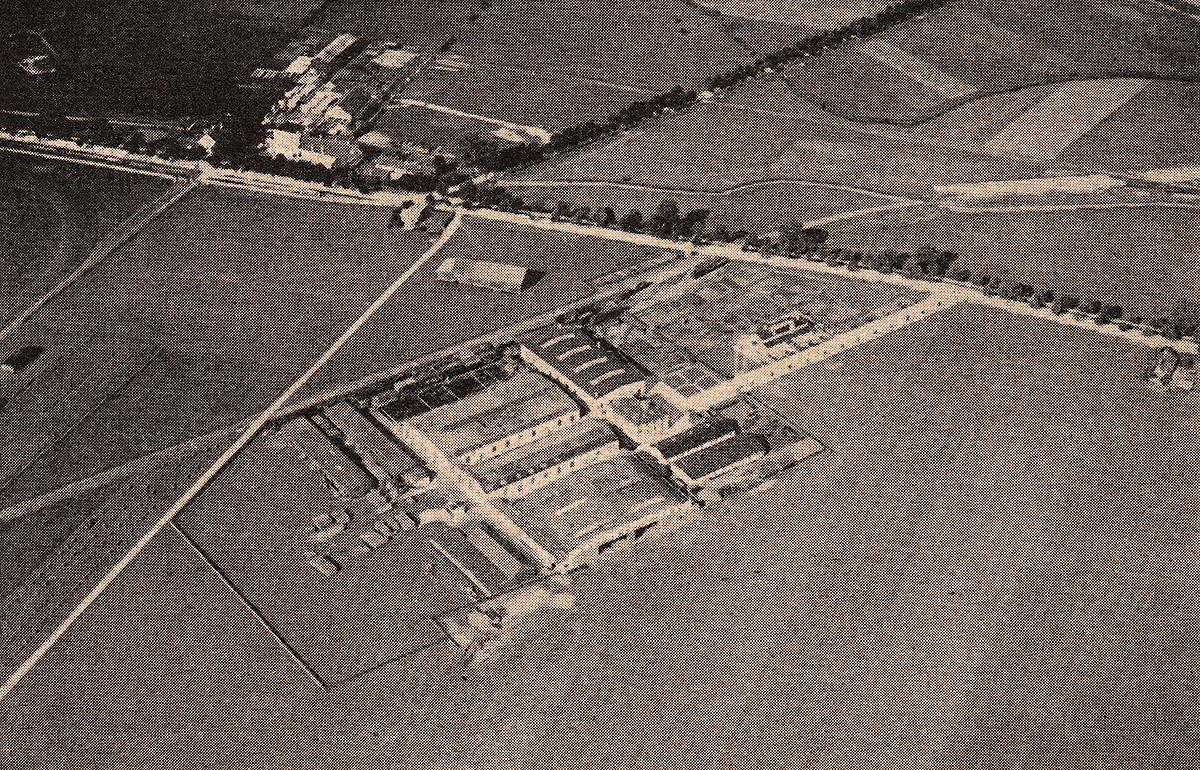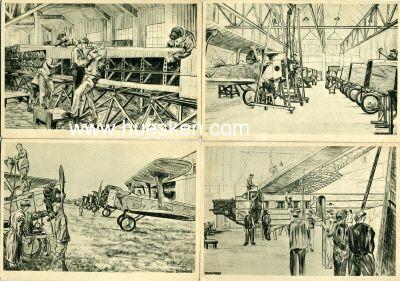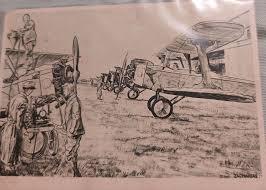In February 1916, the south German engineering company MAN AG, and several banks purchased the unprofitable aircraft builder, Otto-Flugzeugwerke, starting a new company Bayerische Flugzeugwerke AG. The articles of association were drawn up on February 19 and 20, and completed on March 2, 1916. Details of the company were recorded in the Commercial Register with an equity capital of RM 1,000,000 on March 7, 1916. 36% of the capital was provided by the Bank für Handel und Industrie, Berlin, 30% by MAN AG and 34% by Hermann Bachstein, Berlin. The first Chairman of the Board of Management was Peter Eberwein, who had previously been employed at Albatros Flugzeugwerke.
Due to the need for immediate aircraft production for the ongoing war, there was no time for development work and BFW manufactured aircraft under licence from Albatros Flugzeugwerke. Within a month of being set up, the company was able to supply aircraft to the war ministries of Prussia and Bavaria. However, major quality problems were encountered at the start. The German air crews frequently complained about the serious defects that appeared in the first machines from BFW. The same thing had happened with the aircraft from the predecessor company run by Gustav Otto. It was only organizational changes and more intensive supervision of the assembly line that succeeded in resolving these problems by the end of 1916. BFW then started turning out over 200 aircraft a month, with their workforce growing to 3,000 and becoming one of the largest aircraft manufacturers in Bavaria.
The end of the war hit BFW hard, since military demand for aircraft collapsed. The company's management were forced to look for new products with which to maintain their position in the market. Since WWI aircraft were largely built from wood to keep their weight down, BFW was equipped with the very latest joinery plant. What is more, the company still held stocks of materials sufficient for about 200 aircraft, and worth 4.7 million reichsmarks. It therefore seemed a good idea to use both the machinery and the materials for the production of furniture and fitted kitchens. In addition, from 1921 onwards, the company manufactured motorcycles of its own design under the names of Flink and Helios.
In the autumn of 1921, Austrian financier Camillo Castiglioni first announced his interest in purchasing BFW. While most of the shareholders accepted his offer, MAN AG initially held on to its shareholding in BFW, but Castiglioni wanted to acquire all the shares. He was supported in this by BMW's Managing Director Franz Josef Popp who, in a letter to the chairman of MAN, described BFW as a "dead factory, which possesses no plant worth mentioning, and consists very largely of dilapidated and unsuitable wooden sheds situated in a town that is extremely unfavorable for industrial activities and whose status continues to give little cause for enthusiasm". Apparently Popp was still in close contact with Castiglioni and was perhaps even privy to the latter's plans for merging BMW with BFW. It was probably in the spring of 1922 that Castiglioni and Popp persuaded MAN to give up its shares in BFW, so that now the company belonged exclusively to Castiglioni. Then, in May of the same year, when the Italian-born investor was able to acquire BMW's engine business from Knorr-Bremse AG, nothing more stood in the way of a merger between the aircraft company BFW and the engine builders BMW.
Bayerische Flugzeugwerke (BFW) (Bavarian Aircraft Works) was reformed in 1926, in Augsburg, Bavaria, when Udet-Flugzeugbau GmbH was changed into a joint-stock company. In the early stages, BMW AG held a stake in this company and was represented by Josef Popp, who held a place on the Supervisory Board.
Willy Messerschmitt joined the company in 1927 as chief designer and engineer, and formed a design team.
One of the first designs, the Messerschmitt M20, was a near-catastrophe for the designer and the company. Many of the prototypes crashed, one of them killing Hans Hackmack, a close friend of Erhard Milch, the head of Deutsche Luft Hansa and the German civil aviation authorities. Milch was upset by the lack of response from Messerschmitt and this led to a lifelong hatred towards him. Milch eventually cancelled all contracts with Messerschmitt and forced BFW into bankruptcy in 1931. However, the German re-armament programs and Messerschmitt's friendship with Hugo Junkers prevented a stagnation of the careers of him and BFW, which was started again in 1933. Milch still prevented Messerschmitt's takeover of the BFW until 1938, hence the designation "Bf" of early Messerschmitt designs.
Messerschmitt promoted a concept he called "light weight construction" in which many typically separate load-bearing parts were merged into a single reinforced firewall, thereby saving weight and improving performance. The first true test of the concept was in the Bf 108 Taifun sports-plane, which would soon be setting all sorts of records. Based on this performance the company was invited to submit a design for the Luftwaffe's 1935 fighter contest, winning it with the Bf 109, based on the same construction methods.
From this point on Messerschmitt became a favorite of the Nazi party, as much for his designs as his political abilities and the factory location in southern Germany away from the "clumping" of aviation firms on the northern coast. BFW was reconstituted as Messerschmitt AG on July 11, 1938, with Willy Messerschmitt as chairman and managing director. The renaming of BFW resulted in the company's RLM designation changing from Bf to Me for all newer designs that were accepted by the RLM after the acquisition date. Existing types, such as the Bf 109 and 110, retained their earlier designation in official documents, although sometimes the newer designations were used (in error) as well, most often by subcontractors, such as Erla Flugzeugwerke of Leipzig. In practise, all BFW/Messerschmitt aircraft from the Bf 108 four-seat touring monoplane, to the Bf 163 light observation aircraft (not the same plane as the later Me 163 rocket fighter) were prefixed Bf, all later types with Me.







